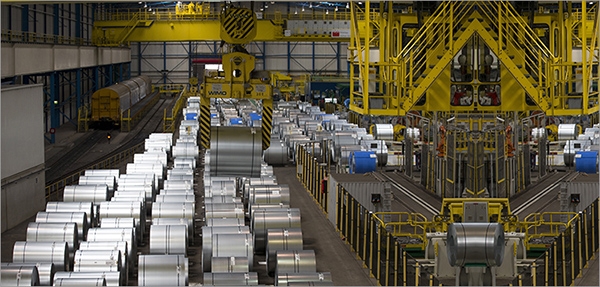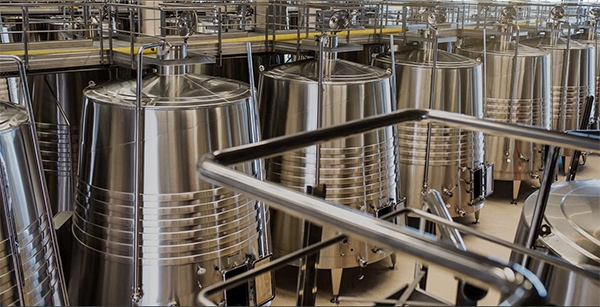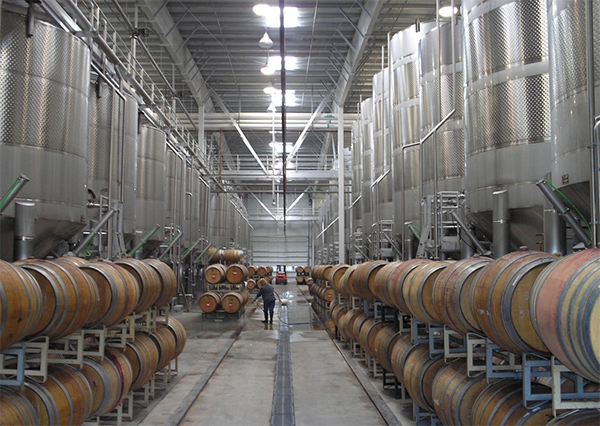Industries that apply stainless steel
stainless steel is a popular material for making pharmaceutical instruments, not only meeting the requirements set forth by gmp, stainless steel also possesses many outstanding properties suitable for the pharmaceutical environment.
general concept of stainless steel
in the industry speaking them, stainless steel also known as stainless steel or stainless steel is a steel alloy with a high content of chromium and carbon.
the outstanding feature of stainless steel is its resistance to corrosion because of its high chromium content. stainless steel is less prone to discoloration, low maintenance costs and its beautiful shine make it an ideal material for many applications where both steel strength and high corrosion resistance are required.
stainless steel is rolled into sheets, walls, wires and tubes used in food processing, automotive, home appliances, energy, construction, medical...
because of its high corrosion resistance, easy cleaning and steam sterilization, no need for surface coating, stainless steel is widely used in kitchens and food processing plants.
what industry is stainless steel used in?
food processing
this metal is used in food processing machines to keep the environment sterile. bacteria cannot survive on stainless steel, so it will not affect food products. stainless steel products for this industry can include food preparation surfaces, knives, industrial food processing machinery, or even ovens and food transport systems.
car
stainless steel can be used in the manufacture of vehicles for aesthetic or high performance purposes. steel has high strength, and therefore it is perfect for frequently used vehicles and at high speeds. top quality cars tend to have a lot of stainless steel parts, but steel is used in all cars for parts like the wheels, wipers or airbag assembly.
houseware
many homeowners prefer stainless steel for their home appliances for ease of cleaning and aesthetics. stainless steel kitchen appliances are prized, so much so that many homeowners purchase them specifically to enhance the value of their home.
energy
stainless steel is used in the energy industry due to its ability to withstand high pressures and temperatures. it can be used to build anything from wind towers to nuclear reactors. it will not corrode at high temperatures, and it is durable enough to withstand the harsh environments commonly produced in the energy industry.
build
this metal can be used in construction as a durable roofing material or for building facades. it has been used in construction since the 1920s due to its aesthetic qualities and durable functionality. since metal will not corrode by nature, it is prized for keeping buildings looking new and lasting for a long time.
medical
stainless steel is commonly used in the medical industry to keep things sterile. metal is easy to clean and creates an environment that doesn't allow bacteria to grow. this steel is so widespread in the medical industry that there are common grades of steel known as surgical stainless steel.
whatever your industry, use stainless steel. its aesthetics and durability make it the perfect choice for nearly any application. contact us today to find out what stainless steel can do for you.
stainless steel pipe processing process
materials needed
stainless steel is the most widely used and recycled material globally. an estimated 82% of stainless steel being used is recycled into new stainless steel. they will have the same properties as the original steel, with no loss of quality.
before introducing raw materials into the new stainless steel production process, checking the workpiece is paramount. this check is to ensure that there are no radioactive components harmful to humans in the raw materials or scraps. this is also the stage to determine the content of alloying elements in order to classify and arrange the right type or suitable grade of stainless steel.
stainless steel pipe processing:
- step 1: melt the ingredients in an electric arc furnace
- raw material or scrap is melted in an arc furnace by exposing a carbon electrode to scrap stainless steel and alloys. the current passing causes the temperature of the arc to reach 3500 degrees celsius. the temperature of molten steel is up to 1800 degrees celsius. the manufacturer can add carbon, ferrosilicon, oxygen or a gas mixture. this helps speed up the melting process.
- step 2: remove nitrogen, carbon, sulfur
- after the material melts, it will move to the aod stage - the stage of reducing carbon by adding an oxy-argon mixture and adding alloying elements. a mixture rich in iron and low in alloying will dissolve in the arc furnace. nickel, molybdenum, ferrochrome are also added at this stage.
- step 3: adjust the temperature and composition of stainless steel
- this is the final chemical composition adjustment step of the material. the proportions of the components will determine the characteristics and grouping of the material. this stage also removes impurities and homogenizes the temperature and chemicals of stainless steel accurately.
- step 4: casting billets of slabs or ingots
- having just completed the smelting process, the stainless steel is in liquid form and is transferred to the chip casting area to become a chip plate of a specific size.
see more:
- learn the application of orbital welding technology
- what is an arc pulse? benefits of arc pulse for orbital welding machines
process of hot rolling - cold rolling when producing stainless steel
hot rolling is a metalworking process that occurs at temperatures above the recrystallization temperature of the material. here, the manufacturer will use semi-finished products such as plates, flowers, steel chips or slabs after casting for hot rolling. at this point, the particles deform, recrystallize and maintain a stable structure. this prevents the steel from hardening.
some materials are further machined to reduce the sheet wall thickness or to draw the wall of a pipe or wire called cold rolling. thanks to machines, cold rolling in the stainless steel production process helps products to be more diverse in size.
process of annealing - rust removal when producing stainless steel
this is the process of restoring material properties after cold rolling. this step is done by heat treatment. to stabilize the crystalline structure of steel which has been deformed or displaced during rolling.
after that, the product is passed through a mixture of cleaning acids and cleaned with high pressure washing water to remove rust stains on the surface. this step helps to eliminate product defects and helps the product have more perfect mechanical properties. in addition, this step creates a thin chromium oxide protective layer for the product.
the process of finishing stainless steel products
after the above processes, stainless steel is cut into specific and diverse shapes to suit many different applications in life. normally, stainless steel sheets will be glued with a plastic film on the surface to help protect and avoid scratches during transportation.
the finishing stage is an indispensable step in the stainless steel production process. because it will affect the flatness, smoothness and ease of cleaning of the product.



